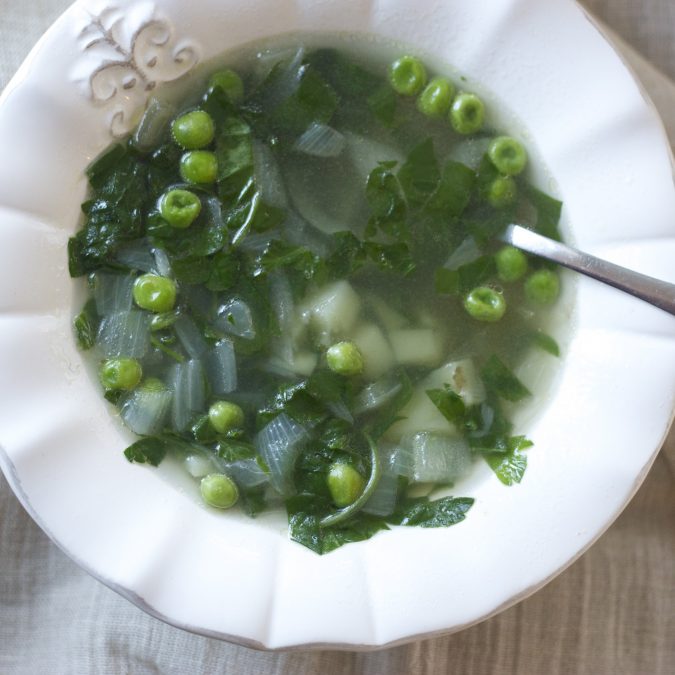


This recipe is from the Canal House Cooking series, volume 3. It’s a wonderful soup for this time of year because of its lack of extravagance. It’s basic and tasty — the kind of meal I’m looking forward to returning to in the coming weeks. I added green peas that I’d frozen in the height of their season months ago. You could use frozen peas, too, or just omit them altogether if you like. I added thinly sliced lemons at the very end. They look pretty, but they also impart a subtle, welcome brightness.
Simmer watercress stems in the stock in a medium pot for 15-20 minutes. Melt oil in another pot over medium heat, add onions, and cook until translucent, about 5 minutes. Add the potatoes. Strain the stock into the pot with the potatoes (leaving the stems behind; discard stems). Cook over medium heat, 10-15 minutes until potatoes are tender.
Finely chop watercress leaves and, along with the parsley, add them to the stock. Add peas and allow to simmer for 1-2 minutes. Season with salt and pepper. Remove soup from heat and lay in lemon slices. Serve as is or with a dollop of sour cream or crème fraîche.
*My Simple Approach to Chicken-Stock:
I take the carcass of 1 chicken I’ve roasted, put it in my 5-quart Dutch Oven and cover it with water (the water should exceed the top of the chicken by about 1-inch). Put it on a low simmer for around three hours. Every once and awhile skim the surface of the broth and throw out the murky foam that will come to the surface. After 3 hours, throw in a quartered onion and 3-4 chopped carrots and let it simmer an additional hour. If the water level gets low, feel free to add another cup or two of water. Strain and allow the broth to cool before using so you can skim off the fat before using. It is, however, perfectly o.k. to use it right away if you prefer or don’t have the time to let it cool completely. Discard the solid parts left behind.